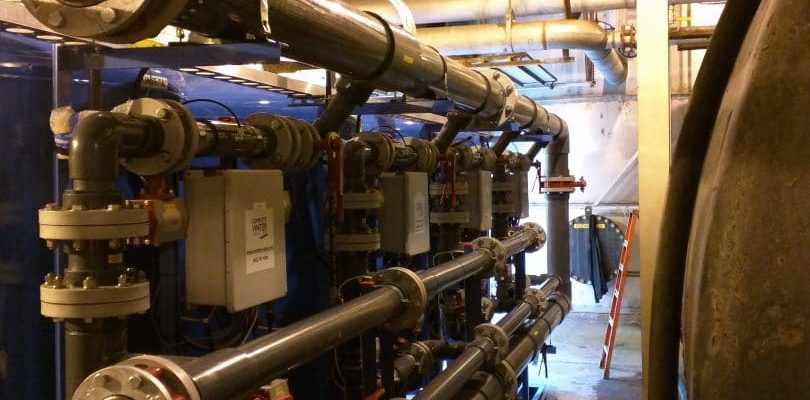The Basics of Turbidity Reduction
The Basics of Turbidity Reduction
Turbidity, or cloudiness, in water is caused by very small particles that remain suspended and tend to “float” because of their very low density. Read on to find out about the basics of turbidity reduction.
Reduction of Turbidity
The Basics of Turbidity Reduction: Turbidity higher than 1 to 5 NTU can plug and cause excessive pressure drop in filters, ion exchange, and reverse osmosis systems. Suspended solids can also adhere to the surface of resin beads and membranes interfering with the exchange or rejection process. The use of media filtration is a means of removing lower levels of suspended solids. Media filters have a bed consisting of one or more layers of granules such as sand, garnet, anthracite (or anthrafilt), manganese greensand, BIRM, and carbon.
Removal Process
Water flows down through the media where the larger particles are physically screened by the cracks and crevices between the granules. Smaller particles, capable of passing through the media are held by Van der Waals forces, or electrostatic attraction forces. As the amount of solids increase on the filter media, they also serve as a filtering mechanism. For this reason, media filters can achieve a finer filtration than what might be expected. Although filter effluent quality can be projected, it is rarely guaranteed. Abrupt changes or pulsating flows, higher flow rates create shear forces on the suspended particles. The shear forces can prevent particles from adhering to the media or can dislodge particles that were previously retained.
Pressure Drop
Eventually, the crevices between the media granules will narrow and become restricted due to the build up of the filtered particles. This will cause an increase in pressure drop across the media bed when operated at the same flow rate. It could also create a decrease in the flow rate when operated at the same pressure drop. The pressure drop across a filter is calculated by taking the inlet pressure reading and subtracting the outlet pressure reading with water flowing through the filter at the desired flow rate.
When the pressure drop increases 10 psi over the “clean” pressure drop in the filter, the filter should be backwashed. For instance, if immediately after backwashing, a clean filter bad has a 3-psi differential pressure when operated at its design flow rate, then it should be backwashed when the differential pressure reaches 13 pounds per square inch differential (psid) when operating at the same flow rate. Operating a filter at pressure drops greater than 10 psi over the clean pressure drop may compact the filter media, making it difficult to lift and release particles during backwash.
Unfortunately, ow long a filter will operate between backwashes is difficult to predict. It is dependent on a number of variables, such as:
- the flow rate through the filter.
- the quantity of suspended matter in the water.
- particle characteristics, such as size, uniformity, shape and rigidity/compressibility


